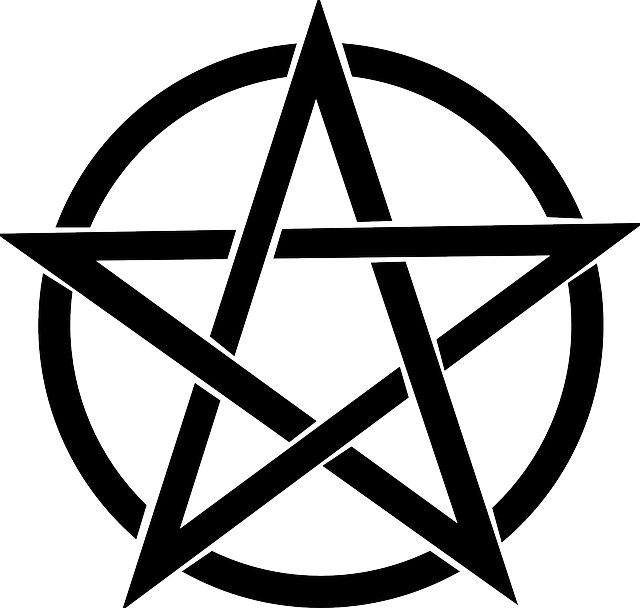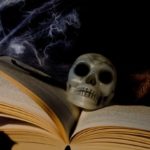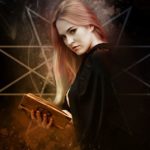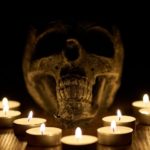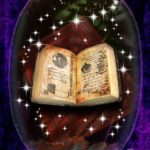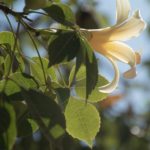Wicca has a variety of paths and traditions, and each of them has adopted symbols that are relevant to them. Although all these symbols have been adopted by various Wiccan groups, not everyone will recognize the symbols as part of their individual tradition.
THE PENTACLE
THE PENTACLE or Pentalpha is used by Wiccans to represent the four elements: fire, water, earth, air, as well as a fifth element, spirit. Each point represents one of these elements, the topmost point representing the rising spirit. An inverted pentacle, often associated with satanism, or LaVeyan satanism is also used by Wiccans to represent the second-degree initiation. In Wicca, there is nothing satanic or evil about an inverted pentacle. Traditionally, though, going back a couple of thousand years to the teachings of Pythagoras, the five points of the pentacle were to symbolize:
*Hydor, water
*Gaia earth
*Idea or , Hieron “a divine thing”
*Heile, heat (fire)
*Aer, air.
The single circle around the pentacle has a number of meanings, but most common is the belief that it symbolizes the harmony of nature, the circle of being and the unity of the craft.
THE HIDDEN PENTACLE
THE HIDDEN PENTACLE is a kind of pentacle that is disguised in a complex pattern to look like a flower. This is used in times when displaying the traditional pentacle, either inverted or not, might be unadvisable.
THE HORNED GOD
THE HORNED GOD symbol is a less common symbol for the male aspect of the dual deities of Wicca. The most common form of this symbol is a circle with a crescent moon on top, the points of the crescent moon pointing up. A less common symbol is the goat head, which the LaVeyan Church of Satan adopted for its symbol, even though its origins are in Wicca and not Satanism. Egyptian Recon and several of the feminist paths of Wicca have adopted the cow goddess Hathor’s symbol in the horned god’s place. The horned god is sometimes called Cernunnos, a horned deity from Celtic myth.
THE TRIPLE GODDESS
THE TRIPLE GODDESS represents the aspects of the feminine aspect of the dual deities of Wicca. The goddess has three personas, a kind of trinity of the virgin, the wife and the crone, or alternately as the maiden, mother, hag. The hag, or crone, does not have the negative association that popular culture has placed on it, but rather the connotation of the wisdom, maturity, power and authority that comes with age.
This symbol has numerous forms, but all involve the lunar cycles. The most common is waxing, full and waning moon. Another is an interconnected three crescents.
THE WHEEL OF THE YEAR
THE WHEEL OF THE YEAR and THE WITCH’S SIGN is an eight-spoked wheel or square, respectively. The origin of the Witch’s sign is probably from its resemblance to a combination of the Roman numeral 13. It was used it medieval times as a timepiece.
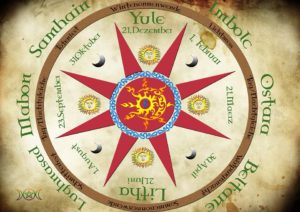 The wheel of the year represents the four seasons divided by the solstices and equinoxes. It also symbolizes the eight holy days of the year.
The wheel of the year represents the four seasons divided by the solstices and equinoxes. It also symbolizes the eight holy days of the year.
HECATE’S WHEEL
HECATE’S WHEEL is used by those devotees of Wicca that follow the Dianic or Hellenic paths. It somewhat resembles a circle with a maze inside and a star in the center. Hecate is also known as Diana Luciferas, or Diana of the Morning Star. It represents the path of Wicca, the road one follows.
THE SEAX-WICCA
THE SEAX-WICCA is used almost exclusively by the Gardenian branch of Wicca most common in the UK. It is a circle inscribed with a crescent and an eight-pointed cross in the center. It is a very ancient Celtic symbol whose meaning is now purely conjectural, but it now symbolizes the lunar nature of Wicca and its eight holy days.
THE ELVEN STAR
THE ELVEN STAR, septagram or septacle, a seven-pointed star is a representation of the faerie tradition of Wicca. The seven points represent the seven holy places: Sea, sky, wood, sun, moon, and spirit. They also represent the seven directions: north, south, west, east, inward, up and down. Finally, they represent the seven elements: air, fire, water, earth, spirit, life and light.
In addition to these symbols, one should also mention Witch’s Runes or the Theban alphabet. used by Gardner to make his writings cryptic. It is suggested that the alphabet was created during the middle ages by an alchemist named Honorius. This alchemist was a teacher of both Albertus Magnus and Paracelsus, if the dates can be somehow adjusted to allow such a thing.
The traditional tools of witchcraft have also become symbols for Wicca. Their use in the craft is complex and it behooves us not to dwell on that aspect too much.
THE PATEN is a plate, usually inscribed with a pentacle. It is often called a coin in tarot. It is a female earth symbol.
THE SWORD or ATHAME is a ritual dagger. It is often called a spade in tarot. It is the male air symbol. An athame is almost always carried no cutting edge.
THE WAND is a magic tool. It is often called a club or baton in tarot. It is the male fire symbol.
THE CHALICE is a ceremonial goblet. It is often called a cup or a heart in tarot. It is the female water symbol.
THE BESOM is a ceremonial tool used in cleansing rituals. It is often called a broom. It is a feminine symbol of dispersal and gathering.
THE WHITE-HANDLED KNIFE is a symbolic tool used in Gardnerian Wicca. It is used in the cutting of bonds and the making of other magical tools. This is important since the Athame is traditionally blunted.
THE BOLINE is a sickle-shaped knife. It is called a kerfane or kerfan in the Scottish Wiccan traditions. Its shape is like a crescent moon, so it is associated with a moonlit activity, lunar rituals. It is used exclusively in wortcraft and the gathering of mistletoe and other herbs.
THE CAULDRON is a symbol of resplendent fertility, abundance, generosity and inspiration. The cauldron in Wicca must always stand on three legs to represent the triple goddess. This symbol, especially in the Celtic Wicca traditions is also called the Cauldron of Cerridwen.
All of these symbols are wonderfully complex and intricate. Their roots can be traced back to a multitude of cultures and traditions. Wicca has adopted and incorporated so much of value from pagan and neolithic cultures that it’s almost like a museum of world religions.

